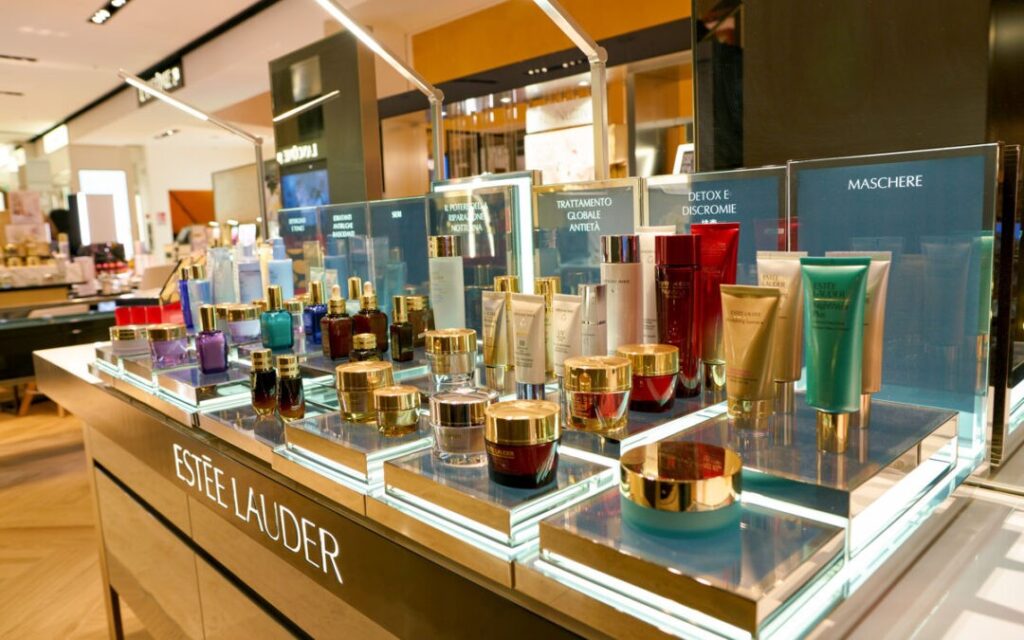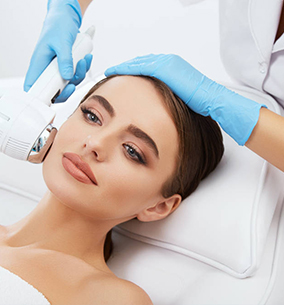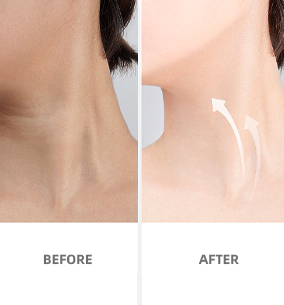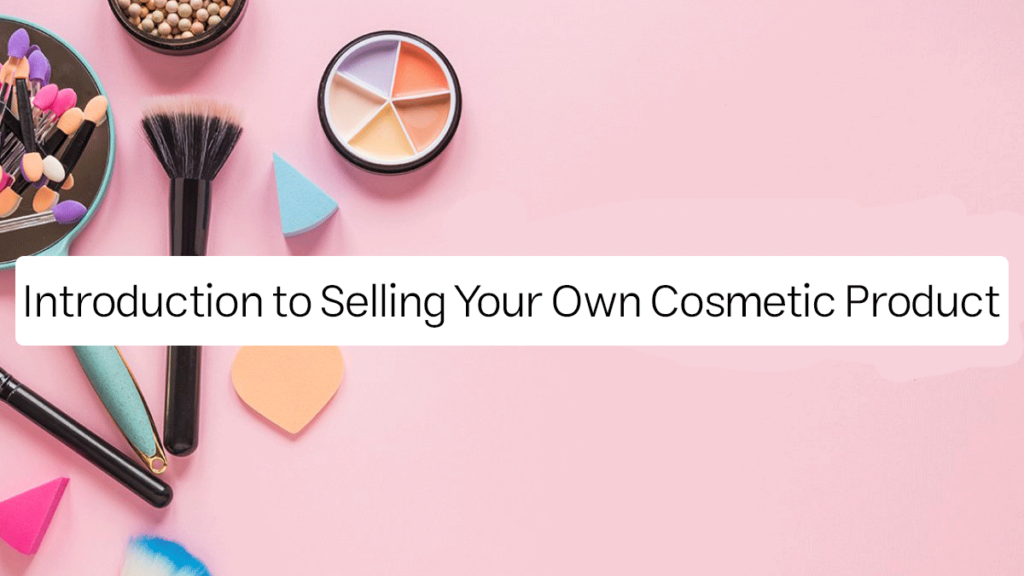The worldwide cosmetics industry is growing at a significant rate, making it a lucrative chance to start a cosmetics firm. Important things to think about while marketing your own cosmetic product are as follows: Conduct thorough market research, pinpoint unfulfilled demands, and create new, premium cosmetic formulas that offer tangible advantages to customers. Make a distinctive and captivating brand identity, complete with a product design and packaging that grabs attention on shop shelves. Make sure that the safety, labeling, and registration standards for your products are met in the markets where you want to sell them. Determine which sales channels are most effective: direct-to-consumer, e-commerce, retail partnerships, or a combination of these. Create a successful marketing plan to increase your cosmetic brand’s visibility, trial, and loyalty. Follow us for more information about how to sell my own cosmetic products.
Benefits of Launching a Cosmetic Product
Since the cost of production is very low when compared to the selling price, the cosmetics business usually enjoys very large profit margins. Because of this, the cosmetics industry is a desirable business opportunity, as it allows you to demand a high price for your goods while keeping your cost per unit low. Running a cosmetics business may be quite profitable because of the large markups in the retail industry.

Overview of the Cosmetic Industry Market
Grand View Research’s market study report estimates that the worldwide cosmetics market will be worth $262.21 billion by 2022. According to the analysis, between 2023 and 2030 for how to sell my own cosmetic products, the global cosmetics industry is expected to expand at a compound annual growth rate of 4.2%.
Developing Your Cosmetic Product
competition analysis, formulation insights, market research, and new product concepts. Create a prototype with the help of cosmetic specialists; choose ingredients; refine the recipe. Consumer input, regulatory compliance, and safety and efficacy testing. Establish marketing, production, go-to-market strategy, and ongoing development. Cosmetics entrepreneurs may develop profitable goods that satisfy customer wants with the aid of this systematic procedure.
Choosing Your Niche and Target Audience
Finding your niche starts with analyzing the advantages and disadvantages of both your company and your rivals to find out how to sell your own cosmetic products. It is important to take into account the requirements, preferences, and issues that your clients wish to have resolved by using your goods or services.
Sourcing Quality Ingredients
Choose your ingredients carefully, giving preference to natural and organic ingredients that are efficient, secure, and sustainable. Examine suppliers’ quality control; make sure they offer a consistent supply, reasonable prices, and excellent service. Ingredient Testing: Test product prototypes extensively for stability and safety, and work to improve the formula. Advantages: Guarantees customer safety, effectiveness, and quality of the product. increases consumer loyalty and brand repute. Allows for efficient and legal production procedures.
Working with a Formulator or Chemist
Professionals in chemistry who specialize in developing novel cosmetics, such as shampoos, lotions, and makeup, are known as cosmetic chemists. Their research and experimentation with the development and enhancement of cosmetic goods are based on the insights they have gained from studying the molecular interactions of certain ingredients. The safety of items that are intended to be placed directly on a customer’s skin or hair must be the first priority for a cosmetic chemist. They also take into account how to preserve shelf life and create scent. In order to create products that work, chemists must combine different substances in ways that will react with skin or hair to give the desired effect. Both independent research laboratories and the R&D divisions of firms that manufacture personal care products provide employment possibilities. All of this is just for you to think about how to sell your own cosmetic products.
Ensuring Compliance with Safety and Regulatory Standards
To guarantee the safety of their products, cosmetic firms are required to adhere to stringent laws that include things like ingredient evaluations, transparent labeling, high-quality production, thorough testing, continuous monitoring, regulatory updates, and third-party certifications. Sustaining compliance is crucial for both product quality and consumer confidence.
Creating a Strong Brand Identity
Establishing a robust brand identity for skincare products is crucial for companies hoping to differentiate themselves from a plethora of rivals in a congested industry. Developing a strategic branding plan is essential for connecting with your desired target market, whether you’re leading a new startup or reimagining an old brand and finding how to sell your own cosmetic products.
Developing a Unique Brand Name
According to how to sell your own cosmetic products you should know A successful cosmetics brand establishment depends heavily on the brand name. It must successfully convey the brand’s stance, values, and spirit. In order to make the brand stand out from the many rivals in the congested cosmetics industry, the name should be memorable and distinctive. Pronunciation and spelling simplicity are crucial since the name must be simple for users to remember and engage with. Global appropriateness is also important to take into account, particularly for firms that want to expand internationally. This is because the name must sound natural and meaningful in a variety of languages and cultural contexts. Legal issues are important; make sure the name doesn’t violate any current intellectual property rights by carefully investigating trademark availability. Additionally, the name should be flexible enough to enable upcoming brand changes or product expansions. Crucially, the name ought to appeal to the target customer’s positive feelings, connections, or goals. Generally speaking, short, snappy names have a greater impact and are easier to remember than long, intricate ones. Creating a distinctive, memorable brand name that captures the essence of the company and makes a statement in the marketplace is a crucial first step in creating a profitable cosmetics company. Thorough investigation, tactical reasoning, and an acute comprehension of the brand and its intended market are necessary.
Read more: Understanding the Costs of Private Label Cosmetics: A Comprehensive Guide
Designing Eye-Catching Packaging
In the view of consumers, packaging may make or ruin a product. Since many individuals put cosmetic goods out on their counters and in obvious locations, many consumers urge cosmetics manufacturers to start working on utilizing sustainable packaging that is still aesthetically pleasing. You may create packaging that accurately reflects your brand’s values and is both visually appealing and sustainable. You’ll be able to reach and keep consumers by doing this.
Crafting a Memorable Logo
To answer this question about how to sell your own cosmetic products, it is better to know that the spirit of a cosmetics brand is the logo. It must faithfully capture the essence, character, and market positioning of the brand. Customers should be able to quickly recognize and remember a logo that is visually stunning and unique. Clarity and simplicity are essential; effective logos tend to be simpler and less crowded than intricate, highly detailed ones. The significance of timelessness lies in the logo’s ability to remain relevant and appealing despite changes in fashion and trends over time. Another essential quality is versatility, which enables the logo to function well in a range of settings and contexts, including digital assets and product packaging. The logo can establish an emotional connection by eliciting favorable feelings, associations, or goals that appeal to the target consumer of cosmetics. To maintain continuity, the logo should also fit in perfectly with the brand’s broader visual design and marketing materials, supporting them both. It is crucial that the logo be readable, particularly when it is resized for smaller platforms like social media or product labels. In order to avoid infringement, it is also essential to make sure the logo design is original and protected by a trademark. A strong visual asset that aids cosmetics firms in drawing in customers, establishing a unique identity in the competitive market, and establishing brand awareness is a genuinely captivating, unforgettable logo. Such a logo has to be created with strategic thought, artistic license, and a thorough comprehension of the business and its target market.
Establishing Brand Values and Story
For this question, how do you sell your own cosmetic products? Establish fundamental brand principles that capture the essence of the cosmetics company’s mission, vision, and dedication to its clientele. Create a genuine brand narrative that resonates with the target market on an emotional level and sets the company apart from competitors. To create a powerful, unified brand identity, express these principles and the company’s narrative consistently at every marketing touchpoint.
Setting Up Your Business
Decide on the business structure (corporation, partnership, or single proprietorship). Acquire the necessary insurance, licenses, and permissions. Find trustworthy manufacturers and suppliers. Obtain money via loans, investors, or personal savings. Establish effective distribution networks, inventory control, and operations. Respect industry rules on marketing claims, labeling, and product safety.

Registering Your Business Legally
To continue how you sell your own cosmetic products, these rules are intended to support safety and guard against harmful health impacts. They also assist in educating customers about the advantages of a product. The Fair Packaging and Labeling Act and the Federal Food, Drug, and Cosmetic Act are the two laws that control the cosmetics business in the United States.
Obtaining Necessary Licenses and Permits
In order to legally function, launching a cosmetics business involves negotiating a complicated web of federal, state, and municipal restrictions and getting the necessary licenses and permissions. This is an important stage that shouldn’t be disregarded if you want to find out how you sell your own cosmetic products. The FDA is in charge of overseeing cosmetic items and their components on a federal basis. Companies could have to list their items, register their facilities, and adhere to tight regulations about product manufacture, labeling, and marketing claims, depending on the particular products. Businesses must get general operating licenses and any industry-specific permissions at the state level. In addition to company licenses and sales tax permits, there may be additional permissions needed for the manufacturing and distribution of cosmetics. Local municipalities will also likely require their own business licenses and permits, which can vary significantly by location. Zoning regulations, health department approvals, and other local requirements must also be carefully researched and obtained.
Setting Up Business Bank Accounts and Payment Systems
To keep personal and corporate funds separate, open separate business bank accounts (savings and checking). Pay attention to features such as company credit and debit cards, mobile deposits, and internet banking. To take credit and debit card payments online, use safe payment processing solutions such as virtual terminals, merchant accounts, and payment gateways. Investigate accepting mobile payments and integrate them with your e-commerce platform to find how you sell your own cosmetic products safely. Using online tools with templates, automatic billing, and linked payments, set up an invoicing system to bill clients. Create an accounting system to monitor your income, spending, inventories, taxes, and other financial information. Work with an accountant or make use of accounting software. The unique cosmetics business’s needs and size will determine the precise requirements.
Pricing Your Cosmetic Product
To establish wholesale and retail pricing, add a markup to the total cost of manufacturing, which includes labor, materials, packaging, and other expenses. Examine the costs of comparable cosmetic items and set competitive pricing for your product. Establish pricing in accordance with the product’s perceived worth and advantages, even if they are greater than those of rivals. To acquire market share, new items should be priced cheaper at first, then progressively raised over time. Place upscale, superior items at the upper echelon of the market. Always have it in mind how to sell your own cosmetic products in a better way.
Calculating Production Costs
The price of the chemicals, botanicals, raw materials, etc. that go into making a product. The price of both main and secondary packaging, which includes boxes and labels as well as bottles, jars, and tubes, expenses for personnel, utilities, facilities, equipment, and any manufacturing that is outsourced. costs for things like marketing, R&D, administrative personnel, insurance, and rent. transportation, warehousing, regulatory compliance, and other incidental costs. The wholesale and retail prices of the cosmetic product are determined by adding a markup to the overall cost of manufacture. The intricacy of the product and the company plan will determine the precise cost components. Costs should be continuously reviewed and adjusted because they might change over time.
Setting a Competitive yet Profitable Price
Setting your rates according to your rivals’ prices as opposed to your own expenses and profit goals is known as a competition-based pricing approach to how to sell your own cosmetic products. There will be even more price rivalry if the difference between costs and the actual selling price is narrow. Stop the presses—it’s not a perfect world! There should always be a bigger gap between costs and the selling price to comfortably boost your earnings.
Implementing Different Pricing Strategies
After figuring up all of the manufacturing expenses, add a margin for retail and wholesale prices. Examine the prices of your competitors and place your goods in a competitive market to determine how to sell your own cosmetic products. Establish pricing in accordance with perceived value, even if it is greater than that of rivals. New items should be priced cheaper at first to capture market share, then higher over time. Place upscale, superior items at the upper echelon of the market. Target market, brand positioning, expenses, and competition all affect the best course of action. Review prices often and make necessary adjustments.
Building an Online Presence
Social media platforms facilitate the exhibition of beauty firms’ products and foster connections with prospective clientele. Brands may create a community of devoted followers and establish a strong online presence by producing visually attractive content, including skincare routines, beauty tips, and before-and-after makeovers.
Creating a Professional Website
Aesthetically pleasing navigation and layout, Comprehensive product details, costs, and purchase superior images of products or brands, information about customer service, SEO-optimized, responsive to mobile devices, frequent changes to the content, a branded, educational internet presence is the aim in order to increase sales. Regular upkeep is essential. This can help you find out how to sell your own cosmetic products better.
Setting Up an E-commerce Store
Select an e-commerce platform (WooCommerce, Shopify, etc.). Make product listings that include thorough product details, photos, and prices. Include safe payment processing (Paypal, credit cards, etc.). Provide shipping choices and compute current prices. Implement wish lists, reviews, and client accounts. Make sure your website is optimized for SEO and mobile devices. Automate inventory control and order fulfillment. Evaluate sales information and carry out promotional campaigns. A simplified, branded internet store with direct client makeup sales is the aim. Continuous optimization is essential.
Optimizing Your Website for SEO
Ensure your website appears on Google for relevant search queries by doing SEO (search engine optimization). SEO is optimizing a webpage’s several components, including its text, headlines, graphics, and URL, to raise the likelihood that it will score highly for particular keywords. By doing this, you enable Google’s algorithm to better comprehend the purpose of your website and ensure that the most pertinent content is displayed. It goes without saying that SEO is a valuable tool for any type of organization. Like a good buddy, it helps your consumers locate you when they need you most. This can help you find out how to sell your own cosmetic products better.
Utilizing High-Quality Product Photography
The best lighting is generally natural since it brings out the genuine colors and textures of the makeup. Try to arrange the picture session next to a window so that natural light may be used. If natural light is unavailable, you can substitute diffused artificial lighting. By doing this, the harsh shadows and overexposure that might result from direct illumination will be lessened. Soft boxes and reflectors are two tools that may be used to softly diffuse light and make makeup products look more appealing.
Utilizing Social Media for Marketing
Influencer marketing involves collaborating with well-known social media users to market goods. User-generated content: By inviting clients to post images or evaluations on their own platforms, targeted advertising: Using demographic and interest-based targeting in paid social media ad campaigns, Interactive content: Producing interesting social media material such as surveys, tests, guides, Emphasis on visual platforms: Give beauty and fashion content priority on Instagram, TikTok, and other channels. Aligning marketing with prevailing social media trends and obstacles is known as trend alignment. The objective is to strategically use social media to increase sales, develop a devoted following of customers, and raise brand recognition. In this field, ongoing experimentation and data analysis are essential for success and find out how to sell your own cosmetic products.

Choosing the Right Social Media Platforms
Visual-first social media platforms are often the most effective channels for the cosmetics business. YouTube, Instagram, and TikTok are especially good since they give priority to photo, video, and beauty-focused material. One of the most important tactics on these platforms is influencer marketing. By collaborating with well-known influencers in the fields of fashion, lifestyle, and beauty, cosmetics businesses may reach a wider audience and benefit from their authority and trust. Content created by users is also quite useful. Social proof and engagement may be increased by encouraging consumers to post images, reviews, and testimonials about your items on their own social media accounts.
Read more: What is OEM?
Developing a Social Media Content Plan
Social media has grown to be a significant advertising platform for businesses that provide skincare, makeup, and other beauty goods to help you find out how to sell your own cosmetic products. Compared to previous kinds of marketing, firms may advertise their products to millions of customers while saving money by using platforms like TikTok, YouTube, and Instagram.
Engaging with Your Audience through Posts and Stories
You start a conversation with your audience when you share anecdotes, firsthand accounts, or even difficulties with health and beauty procedures. This interaction builds a community of devoted followers who have a personal connection to your brand.
Collaborating with Influencers and Beauty Bloggers
According to how to sell your own cosmetic products, partnerships between beauty bloggers and influencers play a major role in the social media strategies of many cosmetics businesses. Through these partnerships, marketers may reach out to existing audiences that share similar interests as their target market. Finding the proper bloggers and influencers is crucial; these are people who have amassed a devoted following in the fashion and beauty industries and whose aesthetic and content style align with the brand’s image. Mega-influencers with enormous followings may not always be as beneficial as micro-influencers with deeply committed, specialized audiences.
Implementing Digital Marketing Strategies
The promotion of companies to interact with potential consumers online and through other digital media is known as online, or digital, marketing. This covers text and multimedia messaging as well as social media, web-based, email, and other marketing channels.
Utilizing Email Marketing Campaigns
Make use of influencers to send your email subscribers exclusive offers or material to help you find out how to sell your own cosmetic products. This can be first dibs on a brand-new product line, exclusive offers, or insider beauty advice. These kinds of exclusives give your emails more value and give subscribers a sense of belonging to an exclusive group.
Running Paid Ads on Google and Social Media
In the Paid Ads online advertising concept for how to sell your own cosmetic products, rivals compete to take part in live auctions with the goal of promoting their ads during certain timeslots on a network or platform. Paid advertisements with aesthetic appeal are created by a skilled aesthetic marketing firm that is aware of the best keywords to use, which ones to stay away from, and what potential patients are searching for in your clinic. They are an extremely focused instrument for bringing in new clients.
Leveraging Content Marketing and Blogging
Cosmetics businesses may effectively reach their target customers through content marketing. This entails producing insightful, instructive, and enjoyable material about a variety of topics, including market trends, product details, beauty issues, and more. Brands have the option to post this material on their own blog or multimedia center in addition to sharing it on social media. Brands may enhance their organic discoverability and establish themselves as trusted sources for customers by optimizing their content for search engines. Engaging in partnerships with prominent beauty bloggers and social media influencers may enhance the visibility and legitimacy of the brand’s content. Influencers have the ability to produce sponsored material, distribute resources supplied by brands, and lead their followers back to the brand’s website.
Selling Through Multiple Channels
According to how to sell your own cosmetic products, the technique of selling your goods across many sales channels is known as multichannel selling. A combination of your own website and shopping cart, online markets, mobile marketplaces, and/or physical storefronts can be used with multichannel management.
Exploring Online Marketplaces (e.g., Amazon, Etsy)
Many cosmetics firms are finding success selling through online marketplaces like Amazon and Etsy, in addition to direct-to-consumer e-commerce and social media platforms. These platforms give access to strong e-commerce capabilities and large pre-existing consumer bases to find out how to sell your own cosmetic products. Cosmetics businesses may make use of advanced selling capabilities, leverage the platforms’ built-in reputation, and exhibit their whole product selection by setting up an official branded shop on these marketplaces. Features like customer review management, SEO optimization for product listings, and targeted advertising are included in this. In order to preserve their identity, brands must carefully manage their presence in the marketplace. This entails following platform guidelines, making the most of product images and information, and maintaining price parity with the brand’s owned channels.
Setting Up Pop-Up Shops and Events
Pop-up events are imaginative, transient gatherings that are staged in unusual locations for a few days or hours before being pulled down. They elicit a sense of surprise since they are unexpected, particularly if they are held in unusual places. Pop-up events provide businesses with an inexpensive and low-commitment means of exploring new creative avenues, creating buzz, and reaching out to untapped markets.
Partnering with Retailers and Boutiques
Getting strategic retail relationships is an essential aspect of a marketing plan for cosmetics. Products placed in physical and virtual retail channels may help businesses reach a much wider audience and gain more trust from their target audience. Finding the ideal retail partners is crucial; they are the people whose brand aesthetics, in-store and online experiences, and client demographics correspond with the cosmetics brand. Major department stores, specialized beauty shops, individual boutiques, and online markets may all fall into this category. Cosmetics businesses may develop unique product offers, co-host events and promotions, and use the retailers’ existing platforms to promote items by collaborating closely with these retail partners. Strong online and in-store positioning promotes consumer trust and brand exposure. All of this is just for you to think about how to sell your own cosmetic products.
Ensuring Customer Satisfaction
Because it fosters client loyalty and good word-of-mouth, customer happiness is crucial to a beauty salon’s success. Customers who are happy with the salon are more likely to use it again and refer others to it, which helps the business expand and succeed to know how to sell your own cosmetic products. Happy clients can also draw in new business and enhance the salon’s image. It’s critical to actively listen to customers’ demands, offer individualized services, and routinely ask for feedback in order to improve the entire salon experience if you want to boost customer happiness.
Providing Excellent Customer Service
It is important for salons to actively listen to the wants and preferences of their consumers in order to boost customer satisfaction. This entails paying close attention to detail during consultations, asking insightful questions to fully grasp the desired outcome for the client, and taking careful note of any unique requests or concerns. The salon staff may provide individualized services and treatments to each customer by actively listening to them, resulting in a customized experience. Personalized services, along with attentive listening, are essential to raising client happiness. This might include making personalized product recommendations, suggesting specific treatments depending on the client’s hair type and problems, or providing one-of-a-kind add-ons that address their particular requirements. By going above and beyond to provide a customized touch, the salon shows that they are dedicated to fulfilling each individual client’s needs.
Implementing Easy Returns and Exchanges
Clearly define and post return and exchange policies that are easy to understand and follow. Give consumers a range of time periods—between 30 and 60 days—in which to return or swap things. Give consumers pre-paid return mailing labels to streamline the procedure. Reduce the amount of paperwork needed for the procedure and make it quick and easy. Educate customer support representatives on how to properly handle returns and exchanges. Keep an eye on the software at all times and adjust it in response to user input. All of this is just for you to know how to sell your own cosmetic products.
Gathering and Responding to Customer Feedback
Make use of customer service encounters, reviews, and surveys. Determine prevalent problems, pains, and opportunities. Enhance the product and convey modifications. Client follow-up demonstrates your appreciation for their feedback.
Managing Inventory and Fulfillment
Examining sales information and patterns to precisely forecast product demand can help you know how to sell your own cosmetic products. Sustain appropriate supply levels to satisfy demand without going overboard. Effective order processing, shipping, and warehousing procedures, Sync up supply and delivery for online, retail, and wholesale. Easily and affordably handle exchanges and refunds, the secret is to build a flexible and robust supply chain that minimizes waste and expenses while guaranteeing that goods are accessible when and where customers need them.

Choosing a Reliable Fulfillment Partner
According to how to sell your own cosmetic products, choose a partner with distribution and fulfillment experience in the cosmetics industry. Make sure you have the capacity to manage growing and varying order volumes. Confirm reliable procedures for order accuracy and inventory management. Give clients options for speedy delivery. Connect the partner’s systems to your online store. Obtain insight into performance data, order status, and inventory levels. For your cosmetics brand, the ideal fulfillment partner can optimize your processes, cut expenses, and provide a remarkable client experience.
Keeping Track of Inventory Levels
In order to forecast future product demands, analyze sales data. Utilize software for inventory management to monitor stock levels. Conduct routine inventory audits to find disparities. Retain the ideal level of safety stock to prevent stock outs. Sync up stock across wholesale, internet, and retail channels. For companies that sell cosmetics, efficient inventory management reduces waste, guarantees product availability, and keeps the supply chain running smoothly.
Ensuring Timely and Accurate Order Fulfillment
Enhance workflow and operations in the warehouse. tracking the availability of products in real time, Connect with online shopping carts to process orders quickly and easily. Provide clients with a variety of delivery choices. Adopt stringent procedures for product inspection and packing. Track and enhance fulfillment indicators such as timely delivery and order correctness. In the cutthroat cosmetics industry, sustaining brand reputation and offering a first-rate customer experience depend heavily on the prompt and accurate delivery of orders. All of this is just for you to know how to sell your own cosmetic products.
Monitoring and Analyzing Sales Performance
Keep tabs on your revenue, sales, conversion rates, and average customer lifetime. Combine sales information from wholesale, retail, and internet sources. Determine popular items, new trends, and seasonal patterns. To forecast future sales and inventory requirements, use previous data. Create sales reports on a regular basis to assist with strategic decision-making. In the quick-paced cosmetics industry, marketing, product development, and inventory management all depend on closely tracking and evaluating sales success.
Using Analytics Tools to Track Sales
Combine sales information from wholesale, retail, and internet sources. Monitor important data like revenue, conversion rates, and client lifetime value. Examine past data to identify seasonal trends and top-selling items. Analyze the data to estimate future sales and inventory requirements. Produce reports that are useful for making strategic company choices. Cosmetics businesses are able to make data-driven decisions that maximize sales, marketing, and inventory management by utilizing robust analytics solutions. All of this is just for you to know how to sell your own cosmetic products.
Evaluating Marketing Campaigns and ROI
Track important metrics like clicks, impressions, and conversions. Recognize the marketing touchpoints that influence sales. Determine the cost of acquiring customers and the effectiveness of marketing expenditures. Calculate the additional money and profit that campaigns bring in. Utilize data to increase campaign performance in the future by refining methods. Thorough marketing analytics enable cosmetics firms to make data-driven decisions and optimize the return on their promotional spending.
Adjusting Strategies Based on Performance Data
Keep an eye on important variables like revenue, client satisfaction, and return on marketing. Examine the data to identify new trends and evolving consumer preferences. Try out fresh items, packages, and advertising strategies. Quickly modify tactics in light of insights supported by data. Include performance data in all organizational decision-making processes. Cosmetics businesses are able to adapt to changing market conditions by continually refining their plans through the utilization of detailed performance data. All of this is just for you to know how to sell your own cosmetic products.
Scaling Your Business
A company that is scaling is getting ready for long-term growth. It’s clearing the path so that your company may expand unhindered. Many people are unaware that scaling and growth are not the same. Scaling your firm allows you to grow income without using a lot of resources. Growth, on the other hand, is the outcome of comparable investment efforts.
Expanding Your Product Line
Investigate new trends and unfulfilled client demands. Make creative new blends and containers; present supplementary goods that boost the main brand. Enter new markets for neighboring product categories or clientele. e on jointly-developed or licensed items with other brands. Collaborate on jointly-developed or licensed items with other brands. Cosmetics businesses may maintain their competitive edge, promote steady sales growth, and foster brand loyalty by strategically expanding their product offerings. All of this is just for you to know how to sell your own cosmetic products.
Entering New Markets
Perform market research on competitors, trends, and demographics. Adjust goods, recipes, and packaging to suit regional tastes. Create a dependable distribution and supply network. Customize your marketing, sales, and branding tactics. Make enough investments, anticipate initially slower growth, keep an eye on results, and tweak the plan.
Building Strategic Partnerships
Determine synergies and complementary skills. Analyze the alignment and reputation of possible partners. Create win-win contracts that distribute rewards and risks. Clearly define roles, duties, and governance. Encourage constant dialogue and cooperation. Analyze partnership performance on a regular basis. Be ready to make changes or stop working if necessary. All of this is just for you to know how to sell your own cosmetic products.
Case Studies and Success Stories
thoroughly investigated Chinese consumer inclinations, custom product formulations, marketing strategies, and packaging-made local manufacturing and distribution investments, Utilizing social media and e-commerce channels, becoming the industry leader in ten years, creating a wide variety of foundation shade options, including a variety of influencers and models, Developed a robust direct-to-consumer enterprise, prompted a change in the industry toward diversity, reached sales of more than $500 million in the first year, In the ever-changing cosmetics sector, these examples demonstrate effective approaches to product innovation, market entrance, and digital transformation. Developing a strong brand identity, utilizing technology, and comprehending the target market are the three main topics. All of this is just for you to know how to sell your own cosmetic products.
Examples of Successful Cosmetic Brands
L’Oreal, a leading global cosmetics company with a wide global reach, successfully entered the Chinese market through localization. Celebrity Rihanna founded Fenty Beauty with an emphasis on diversity. The brand offers a wide selection of 40 shades of foundation to cater to a variety of skin tones. Glossier is a community-driven, digital-first beauty business that was established in 2014 with a focus on social media and user-generated content to cultivate an engaged client base. Deep consumer insights, creative product creation, successful digital and social media marketing, and a strong emphasis on establishing a brand identity and rapport with customers are all critical success elements. These companies have created new standards and trends for the sector.
Key Takeaways and Lessons Learned
Global expansion requires localization, which involves adjusting products, packaging, and marketing to suit regional customer tastes. Adopt social media and digital platforms to foster direct-to-consumer interactions and spur development. Make product innovation a top priority to satisfy a range of customer demands, particularly those in underdeveloped markets. Engage the community to build a devoted following of customers and a strong brand identity. Utilizing user-generated content and influencers may be very successful marketing strategies. Deep consumer insights, social media and digital savvy, creative product creation, and establishing brand equity through community-driven tactics are the main themes of the teachings. All of this is just for you to know how to sell your own cosmetic products.
Conclusion and Next Steps
Localization, inclusion, digital and social tactics, and community involvement are all used by successful cosmetic firms to promote growth. Moving ahead, influencer relationships, digital marketing, new product development, worldwide growth, and building brand communities will all be major areas of emphasis. In order to maintain growth and take advantage of changing market trends, consumer-centricity is essential.

Recap of Essential Steps
For target markets, localize and modify products, packaging, and marketing. Create comprehensive, cutting-edge product lines to satisfy a range of customer demands. Utilize social media and digital platforms to establish direct connections with customers. To build brand identification, collaborate with influencers and take advantage of user-generated material. Encourage devoted, active brand communities built around values and purpose. Continue to use an agile, customer-focused strategy to take advantage of changing trends. To promote sustainable development, it’s important to combine in-depth consumer data, social media and digital acumen, product innovation, and community-driven branding. All of this is just for you to know how to sell your own cosmetic products.
Encouragement to Start Selling Your Cosmetic Product
Determine your distinguishing features and examine the market. Obtain the required qualifications and licenses. Create a successful marketing plan, make the most of your internet presence, and give the customer experience top priority. Keep coming up with new ideas and growing. The key actions to begin selling your cosmetic product successfully are covered in this succinct overview. Please let me know if you have any further questions or want any clarification.











